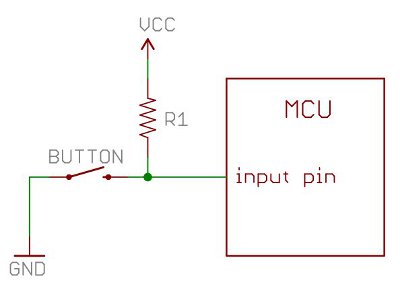How do I calculate the required value for a pull-up resistor?
How do I calculate the required value for a pull-up resistor in microcontrollers?
mixos Answered question 6 June, 2023
Calculating the value of a pull-up resistor for a microcontroller involves considering the electrical characteristics of the microcontroller’s input pins and the desired behavior of the circuit. Here are the general steps to calculate the pull-up resistor value:
- Determine the input pin characteristics: Check the datasheet or specifications of the microcontroller to find the input pin’s electrical characteristics. Specifically, look for the input voltage levels and input current specifications.
- Determine the desired behavior: Decide whether you want a weak or strong pull-up. A weak pull-up allows the input pin to be easily overridden by an external signal, while a strong pull-up provides a more robust and stable high level.
- Calculate the resistor value: To calculate the pull-up resistor value, you can use Ohm’s law, which states that resistance (R) is equal to voltage (V) divided by current (I). The voltage to consider is the difference between the input voltage levels, and the current is the input leakage current or the desired current flowing through the resistor.
- If you want a weak pull-up, you can typically use the input leakage current specification. Calculate the resistor value using the formula:
R = (V_diff) / I_leakage - If you want a strong pull-up, you need to consider the desired current flowing through the resistor. Calculate the resistor value using the formula:
R = (V_diff) / I_desired - Note: The V_diff is the voltage difference between the logic low and logic high levels of the input voltage, I_leakage is the input leakage current specified in the datasheet, and I_desired is the desired current flowing through the resistor.
- Choose a standard resistor value: Once you have calculated the resistor value, you may need to select a standard resistor value from the available options in the market. Choose the nearest higher value for better pull-up strength.
- Verify the selection: After selecting the resistor value, you should simulate or test the circuit to ensure it behaves as expected. Measure the voltage levels and verify that the input pin operates within the specified voltage ranges.
Remember to consult the microcontroller’s datasheet and consider any specific recommendations or limitations provided by the manufacturer regarding pull-up resistors or input pin characteristics.
Common resistor values for pull-up resistors include:
- 1 kilohm (1kΩ)
- 2.2 kilohms (2.2kΩ)
- 4.7 kilohms (4.7kΩ)
- 10 kilohms (10kΩ)
- 22 kilohms (22kΩ)
- 47 kilohms (47kΩ)
- 100 kilohms (100kΩ)
mixos Edited answer 7 June, 2023


